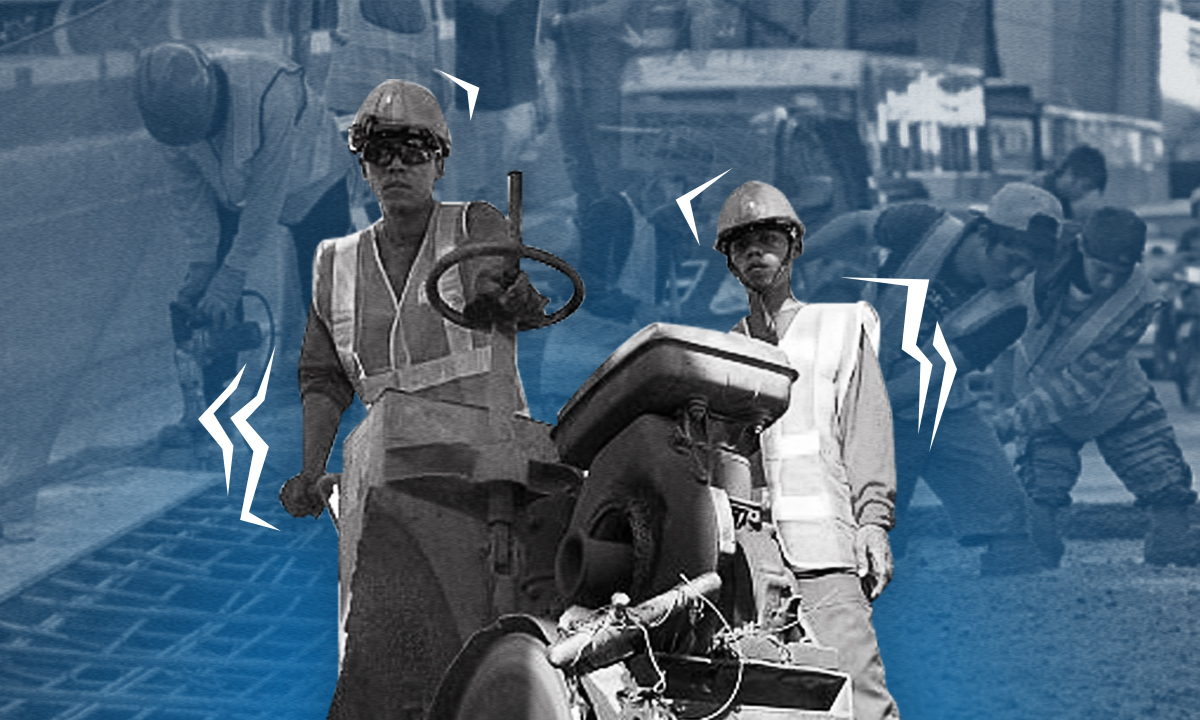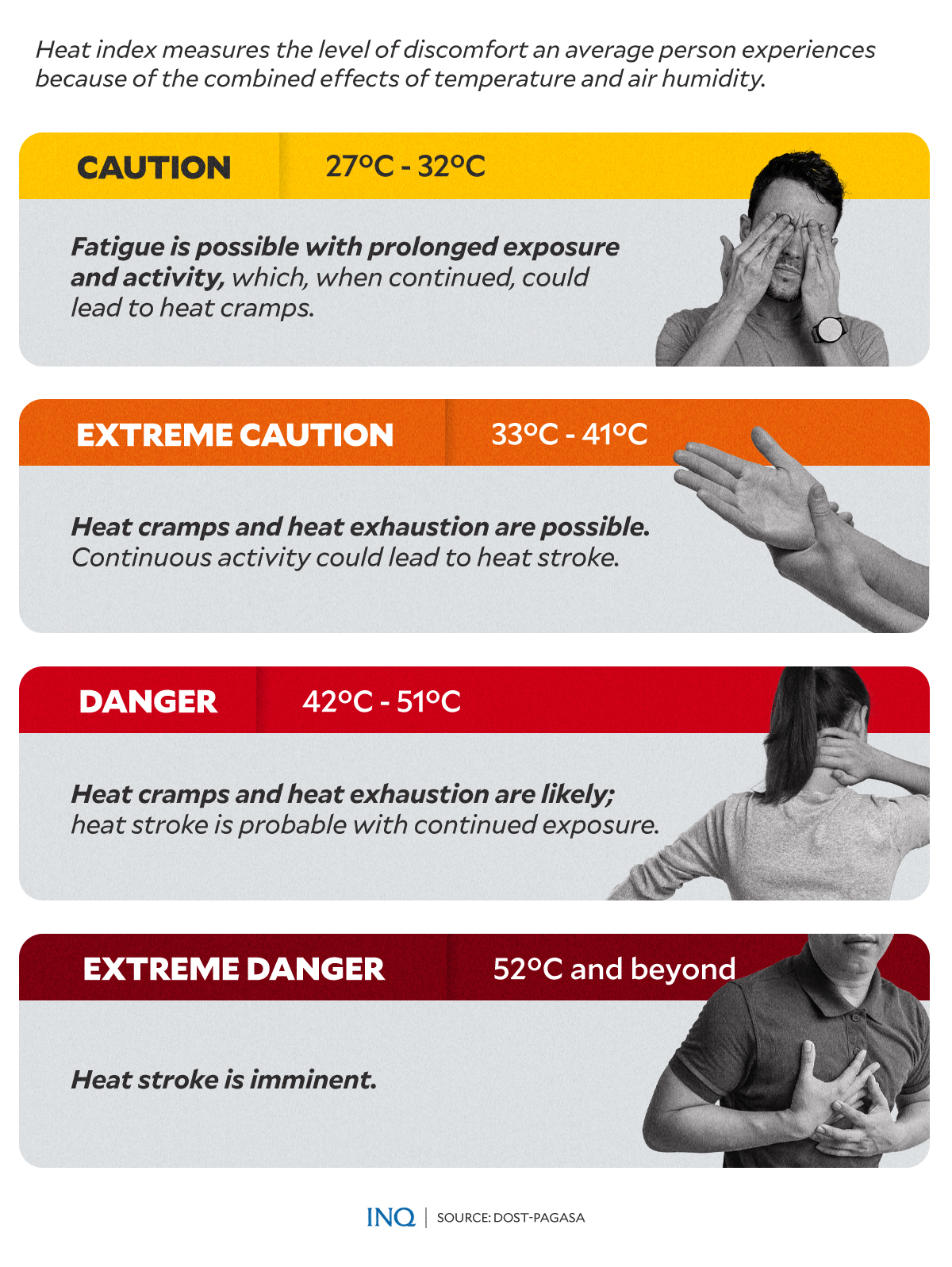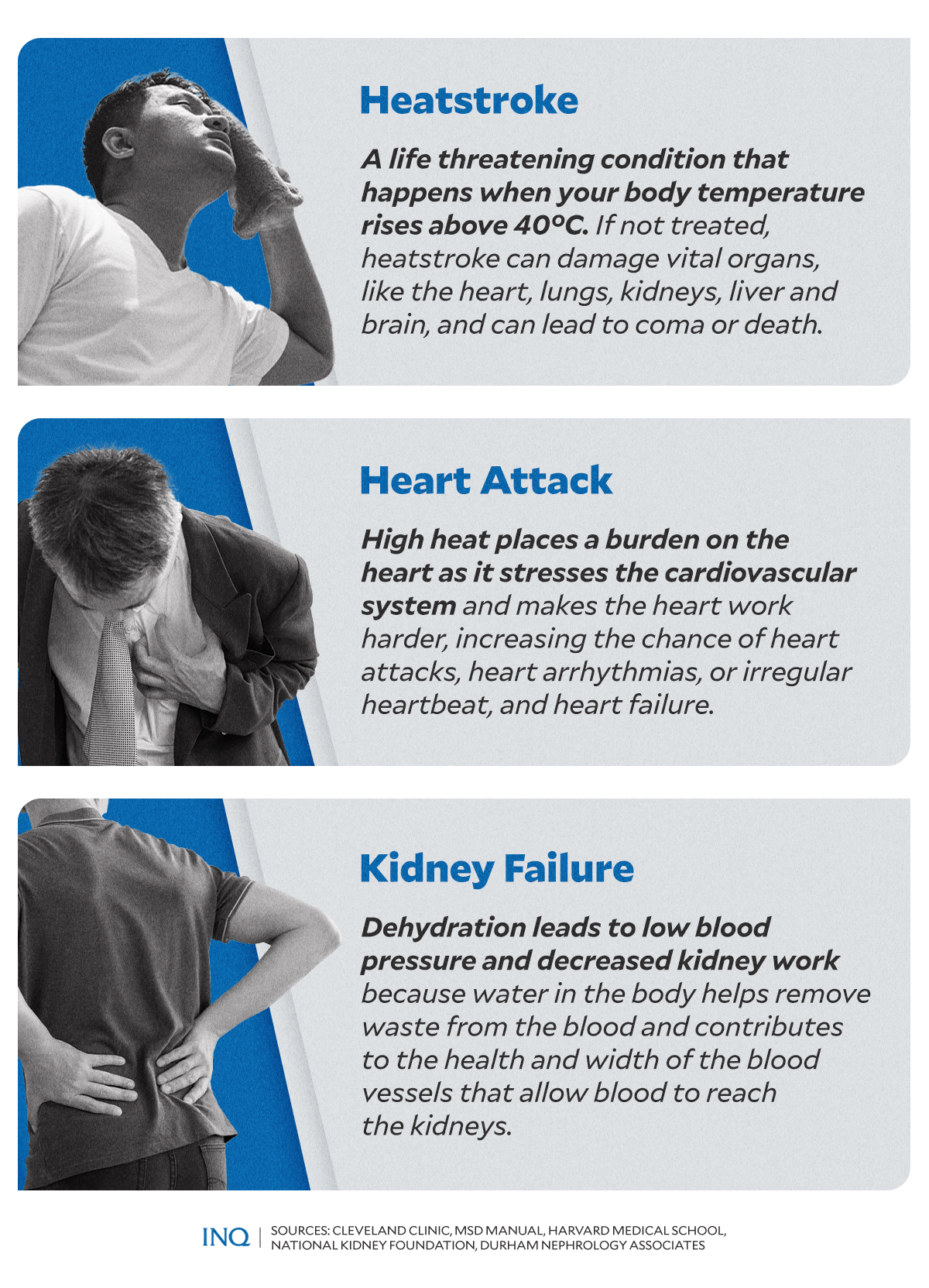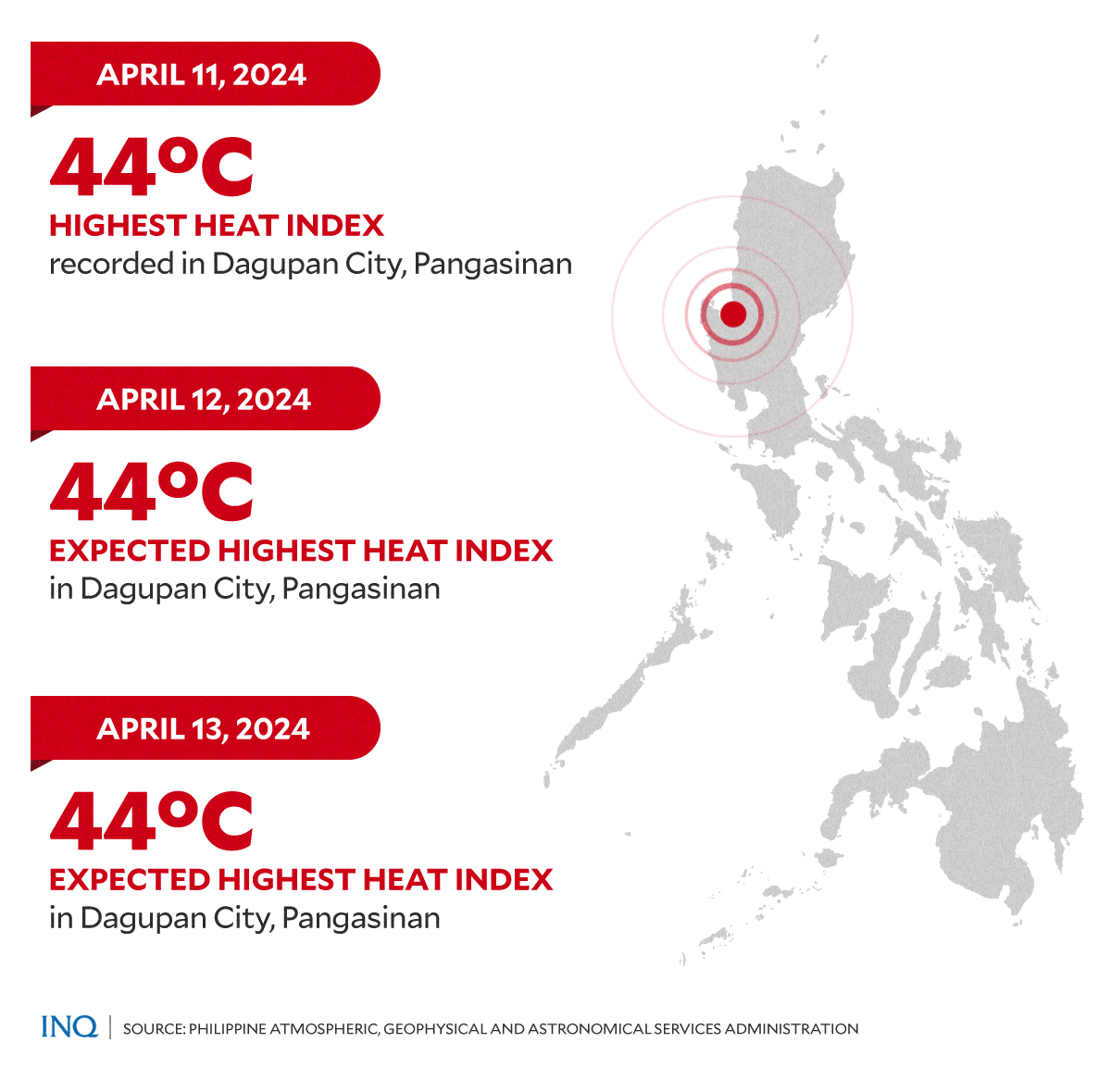Heatwave in PH: Outdoor workers risk life, health to live
MANILA, Philippines—Excessive heat, the US Centers for Disease Control and Prevention (CDC) said, can be “dangerous to health” and can trigger a string of deadly heat-related illnesses, even death.
But for outdoor workers—farmers, construction workers, linemen, and street vendors—getting sick or dying from the killer heat is a risk they have to take because “wala kaming maiuuwi sa aming pamilya (we would have nothing to bring home).”
The Philippine Atmospheric, Geophysical and Astronomical Services Administration (Pagasa) said that a heat index of 42°C to 51°C is already dangerous, pointing out that with this level of heat, “heat cramps and exhaustion are likely.”
When the heat index reaches 52°C and beyond, heat stroke would be imminent as the level is already considered extremely dangerous, based on Pagasa’s effect-based classification.
RELATED STORY: LIST: Suspended on-site classes from April 11 -19
But even with the insufferable heat, Delmar Paggao, a 33-year-old construction worker, said he doesn’t really have a choice. “Kung hindi ko titiisin, pamilya ko naman ang maghihirap (If I will not brave the heat, my family would certainly suffer).”
“Kaya kailangan ko talagang gawin (That’s why I really have to work),” he told INQUIRER.net.
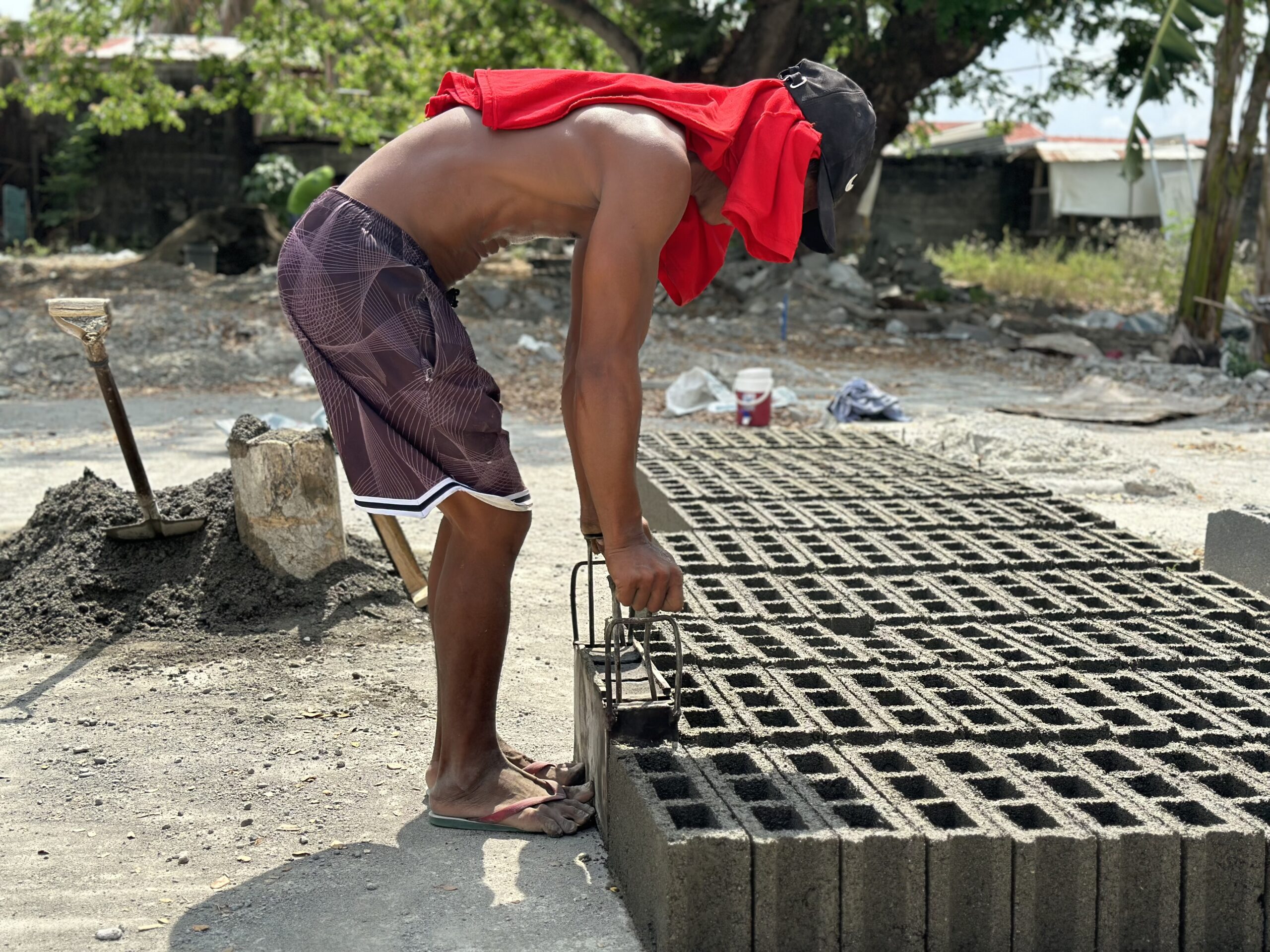
PARA SA PAMILYA. Delmar Paggao, 33, working to produce a construction material despite the sweltering heat. PHOTO BY KURT DELA PEÑA/INQUIRER.net
As pointed out by the US CDC, outdoor workers are the most vulnerable to extreme heat, along with low-income households, athletes, individuals with chronic medical conditions, infants and children, and the elderly.
Like Paggao, Vicente Lopez Jr., a 38-year-old lineman, thinks about his family when he sets out to work in risky conditions made worse by the punishing heat. “Kailangan kong magtrabaho (I have to work),” he said.
READ: Dangerous heat index hits 6 areas on Thursday – Pagasa
A lineman for 14 years already, Lopez told INQUIRER.net that the killer heat has made his work—8 a.m. to 5 p.m.—tougher especially since power lines sag because conductors expand under extreme heat.
“Talagang mas marami ang kailangang ayusin tapos idagdag mo pa ‘yung hirap ng pagtratrabaho sa ilalim ng mainit na araw (More has to be fixed now, then add to it the discomfort of working while exposed to heat),” he said.
Dying of heat
Last April 2, the Department of Health (DOH) issued a warning against heat-related illnesses, saying that heat stress conditions can be characterized by exhaustion, vomiting, dizziness, headache, and lightheadedness.
As stated in the report “How heat kills: What happens to the body in extreme temperatures” by NPR, there are three main deadly consequences of severe heat—heat stroke, heart attack, and kidney failure.
- Heat stroke
The Cleveland Clinic explained that heat stroke is a condition that happens when one’s body temperature exceeds 40°C, and as stressed in an MSD Manual article, heat stroke can damage vital organs and can lead to coma or death.
READ: Extreme heat in PH: Health risks, economic impact
It was pointed out by the US CDC that heat stroke is the most serious heat-related illness, saying that when the body can no longer control its temperature, the sweating mechanism fails and the body will no longer be able to cool down.
“When heat stroke occurs, the body temperature can rise to 41°C or higher within 10 to 15 minutes. Heat stroke can cause permanent disability or death if the person does not receive emergency treatment,” it said.
- Heart attack
Based on the report “Heart problems and the heat: What to know and do” by Harvard Health Publishing, exposure to high heat can place a significant burden on heart health.
“It stresses the cardiovascular system and makes the heart work harder. This can increase the chance of heart attacks, heart arrhythmias (irregular heartbeat), and heart failure,” it said.
As stated in the magazine AARP by cardiologist Arash Harzand, “the heart has to work harder when it’s hot out,” explaining that “it has to pump more blood as the body works to cool itself down.”
- Kidney failure
Dehydration, which can happen because of heavy sweating, will lead to low blood pressure and decreased kidney function. When one’s body is dehydrated, “it cannot perform the necessary function.”
As the National Kidney Foundation said, water in the body removes waste from the blood through urine, and also contributes to the health and width of the blood vessels that allow blood to reach the kidneys.
It said a lot of metabolic systems start to shut down in response to a heat illness and a decline in kidney function is part of that irregularity in metabolic systems. There is breakdown of muscle tissue that results in kidney failure.
‘Diskarte na lang’
Based on data from Pagasa, the heat index from April 6 to April 11 peaked between 43°C to 44°C, saying that the same is expected for the next two days, or on April 12 and April 13.
READ: Heat index for April 12: Dangerous 42°C to 44°C in 6 areas
For Warly Bandong, a 36-year-old vendor of rattan products, “dahil wala akong ibang pagpipilian kung ‘di ang magtrabaho pa rin, ginagawan ko na lang ng paraan para maibsan ‘yung init.”
(Because I do not have a choice but to work, I’ve thought of ways to at least ease the heat.)

DISKARTE. Warly Bandong, 36, takes a break from work and rests under a tree. PHOTO BY KURT DELA PEÑA/INQUIRER.net
Talking to INQUIRER.net while resting under a tree, Bandong said he and his wife have to work from 6 a.m. to 5 p.m. in exchange for a meager income because they need to have something to send to their child to school in Zambales.
Like Bandong, Mercedes Agustin, a 35-year-old street vendor, also looks for ways to avoid the killer heat, like changing locations after every few minutes. “Doon ako sa hindi masiyadong mainit (I go to a place where it is not too hot).”
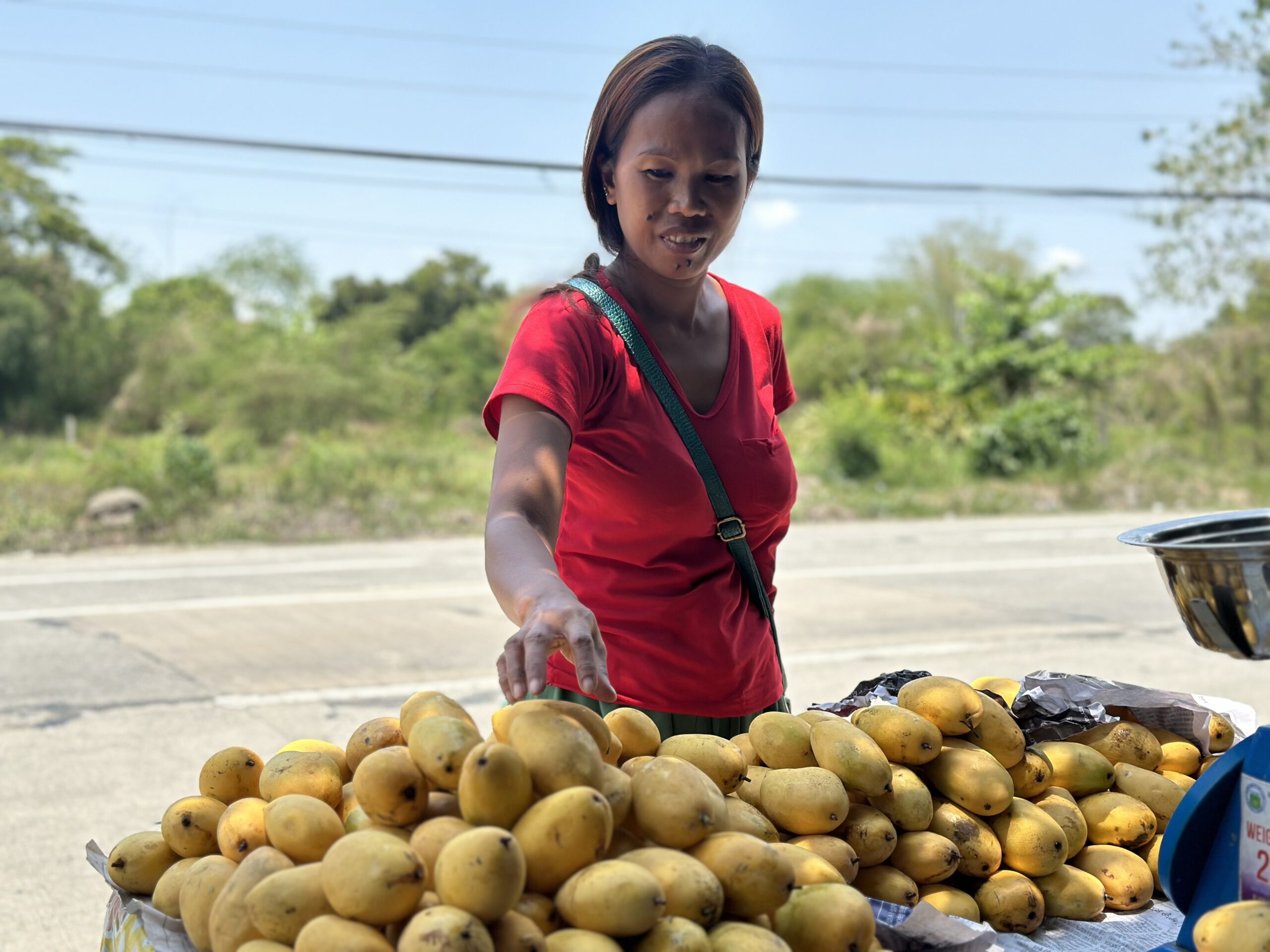
ESCAPING HEAT. Mercedes Agustin, 35, takes shelter from trees to escape the scorching heat. PHOTO BY KURT DELA PEÑA/INQUIRER.net
“‘Yan lang naman ang pwede kong gawin (That’s all I can do),” she told INQUIRER.net, saying that “kaya kung saan may puno, doon na lang ako (where there is a tree, there I am).”
She is outside from 6 a.m. to 5 p.m., selling mangoes.
Preventable
As the DOH said, people should take preventive measures against heat-related illnesses, including drinking a lot of water, skipping iced tea, soda, coffee, or alcoholic drinks and limiting outdoor activities between 10 a.m. to 4 p.m.
It stressed that it is significant, too, to wear loose fitting and lightweight clothes.
RELATED STORY: Heat turns PH classrooms into ovens: What to know
Especially when one is experiencing heat stroke, which is characterized by confusion, altered mental status, slurred speech, loss of consciousness, hot and dry skin or profuse sweating, seizures, and high body temperature, the most important thing to do is to move the worker to a shaded, cool area and remove outer clothing.
As the US CDC said, cool the person quickly either with a cold water or ice bath or wet clothes: “Circulate the air around the worker to speed cooling,” it said. “place cold wet clothes or ice on the head, neck, armpits, and groin; or soak the clothing with cool water.”
“Heat-related illnesses are preventable,” said Health Secretary Teodoro Herbosa.











